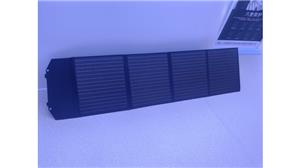Integrated house delivery
1、 Core preparation before container loading
Dismantling and classification of goods
Disassemble the integrated house according to component types, such as walls, roofs, floors, doors and windows, hardware, etc., classify and package them, and label them with numbers to ensure accurate assembly at the destination.
Size and weight calculation
Measure the size and weight of each component, and plan the loading sequence and stacking method based on the internal space of the container (commonly a 20 foot/40 foot container) (such as an inner diameter of approximately 5.89m x 2.35m x 2.39m for a 20 foot container) to avoid space waste or overload.
Preparation of protective materials
Prepare bubble wrap, pearl cotton, waterproof raincloth, wooden blocks, packing straps, etc., with a focus on protecting vulnerable components (such as glass, door and window frames), while also taking moisture-proof measures to cope with the humid environment of maritime transportation.
2、 Key operational procedures for container loading
Bottom layer paving
Lay wooden blocks or moisture-proof boards at the bottom of the container to form a buffer layer, avoiding direct contact of components with the bottom of the container and enhancing stability.
Layered loading and fixation
Heavy components at the bottom, light components at the top: Place relatively heavy components such as walls and floors at the bottom level, and lighter components such as roofs and hardware at the top level to lower the center of gravity and prevent tipping.
Gap filling and fixing: the gaps between components are filled with foam or batten, and the components are fixed with the inner wall of the container with packing belts and ropes to prevent shaking and collision during transportation.
Moisture prevention and labeling
Place moisture-proof agents inside the container and cover key areas with waterproof raincloth; Post warning signs such as "fragile", "moisture-proof", and "upward" at the cabinet door, and attach a list of components and assembly drawings for easy unloading and assembly at the destination.
3、 Core advantages of container loading
High space utilization rate
Through disassembly and precise planning, container space can be maximized, reducing transportation frequency and logistics costs compared to traditional brick and concrete housing transportation.
Goods are well protected
Layered fixation and moisture-proof protection can effectively prevent component collision, moisture, and deformation during transportation, ensuring that the house can be assembled and used normally after arrival.
Adapt to global transportation
Dismantling and classification of goods
Disassemble the integrated house according to component types, such as walls, roofs, floors, doors and windows, hardware, etc., classify and package them, and label them with numbers to ensure accurate assembly at the destination.
Size and weight calculation
Measure the size and weight of each component, and plan the loading sequence and stacking method based on the internal space of the container (commonly a 20 foot/40 foot container) (such as an inner diameter of approximately 5.89m x 2.35m x 2.39m for a 20 foot container) to avoid space waste or overload.
Preparation of protective materials
Prepare bubble wrap, pearl cotton, waterproof raincloth, wooden blocks, packing straps, etc., with a focus on protecting vulnerable components (such as glass, door and window frames), while also taking moisture-proof measures to cope with the humid environment of maritime transportation.
2、 Key operational procedures for container loading
Bottom layer paving
Lay wooden blocks or moisture-proof boards at the bottom of the container to form a buffer layer, avoiding direct contact of components with the bottom of the container and enhancing stability.
Layered loading and fixation
Heavy components at the bottom, light components at the top: Place relatively heavy components such as walls and floors at the bottom level, and lighter components such as roofs and hardware at the top level to lower the center of gravity and prevent tipping.
Gap filling and fixing: the gaps between components are filled with foam or batten, and the components are fixed with the inner wall of the container with packing belts and ropes to prevent shaking and collision during transportation.
Moisture prevention and labeling
Place moisture-proof agents inside the container and cover key areas with waterproof raincloth; Post warning signs such as "fragile", "moisture-proof", and "upward" at the cabinet door, and attach a list of components and assembly drawings for easy unloading and assembly at the destination.
3、 Core advantages of container loading
High space utilization rate
Through disassembly and precise planning, container space can be maximized, reducing transportation frequency and logistics costs compared to traditional brick and concrete housing transportation.
Goods are well protected
Layered fixation and moisture-proof protection can effectively prevent component collision, moisture, and deformation during transportation, ensuring that the house can be assembled and used normally after arrival.
Adapt to global transportation
Compliant with international container transportation standards, it can be delivered to various parts of the world through various means such as sea and land transportation, especially suitable for the bulk transportation needs of overseas engineering projects.






